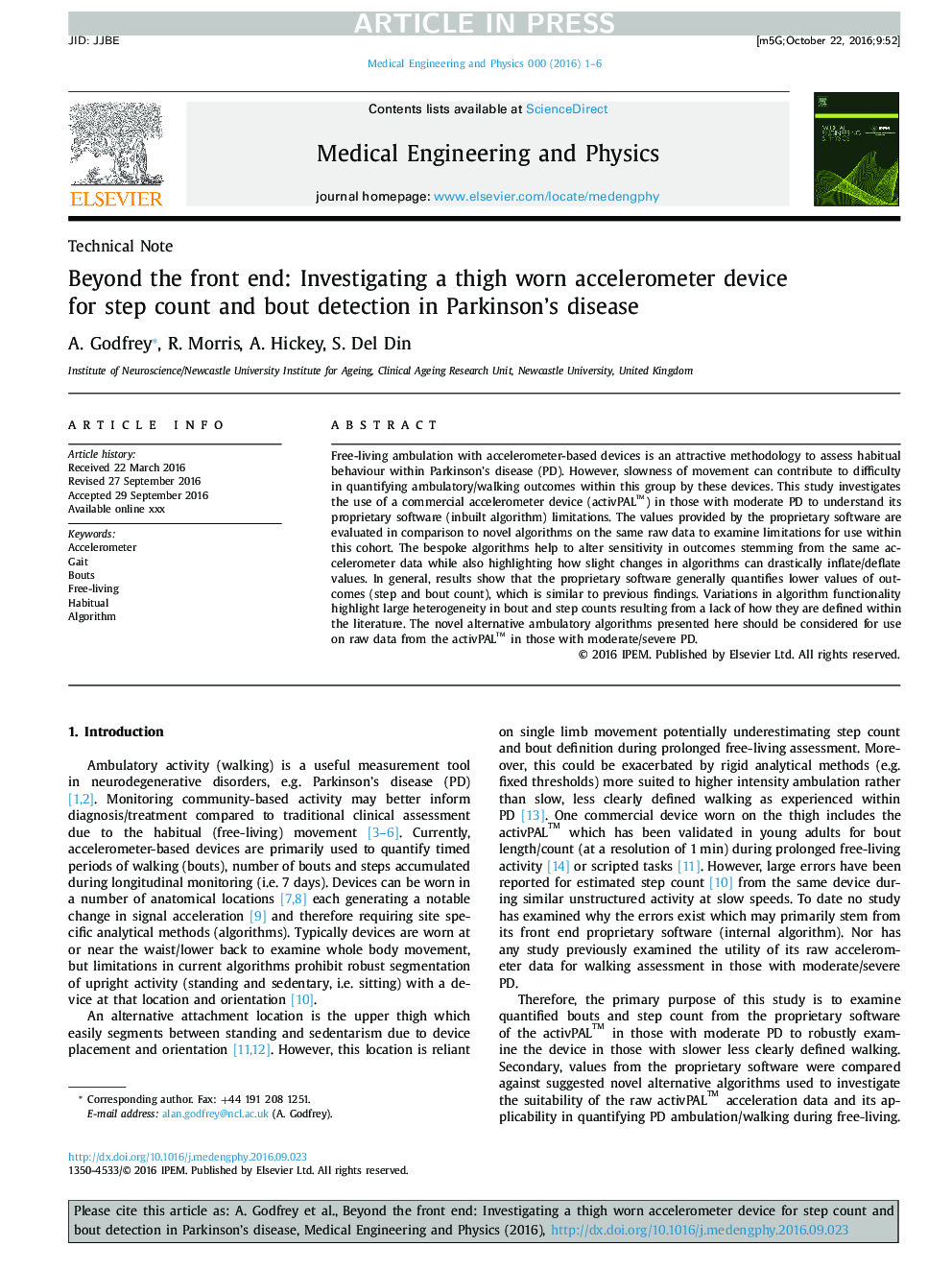| Article ID | Journal | Published Year | Pages | File Type |
|---|---|---|---|---|
| 5032784 | Medical Engineering & Physics | 2016 | 6 Pages |
Abstract
Free-living ambulation with accelerometer-based devices is an attractive methodology to assess habitual behaviour within Parkinson's disease (PD). However, slowness of movement can contribute to difficulty in quantifying ambulatory/walking outcomes within this group by these devices. This study investigates the use of a commercial accelerometer device (activPALâ¢) in those with moderate PD to understand its proprietary software (inbuilt algorithm) limitations. The values provided by the proprietary software are evaluated in comparison to novel algorithms on the same raw data to examine limitations for use within this cohort. The bespoke algorithms help to alter sensitivity in outcomes stemming from the same accelerometer data while also highlighting how slight changes in algorithms can drastically inflate/deflate values. In general, results show that the proprietary software generally quantifies lower values of outcomes (step and bout count), which is similar to previous findings. Variations in algorithm functionality highlight large heterogeneity in bout and step counts resulting from a lack of how they are defined within the literature. The novel alternative ambulatory algorithms presented here should be considered for use on raw data from the activPAL⢠in those with moderate/severe PD.
Related Topics
Physical Sciences and Engineering
Engineering
Biomedical Engineering
Authors
A. Godfrey, R. Morris, A. Hickey, S. Del Din,
